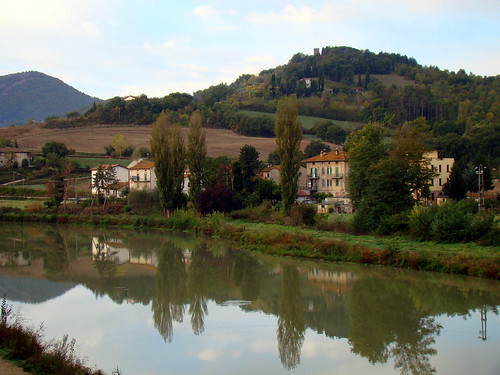 歐洲議會19日決議,將從歐盟2014至2020年的總預算中撥出至少20%用於氣候相關計畫和政策,是目前氣候相關預算的3倍。意即在這7年期間,總計將有高達1800億歐元投注在歐盟的主要氣候政策上;並且估計單單在2014至2015年間,就將有約17億歐元用於開發中國家的氣候支出。
歐洲議會19日決議,將從歐盟2014至2020年的總預算中撥出至少20%用於氣候相關計畫和政策,是目前氣候相關預算的3倍。意即在這7年期間,總計將有高達1800億歐元投注在歐盟的主要氣候政策上;並且估計單單在2014至2015年間,就將有約17億歐元用於開發中國家的氣候支出。
歐洲議會議員表示,經過多月的深入談判後對此長期金融框架所達成的協議,象徵著歐洲轉型為乾淨、低碳且具競爭力的經濟體,以及幫助開發中國家因應氣候變遷衝擊的重要一步。
歐盟發展政策表示將致力於達成這20%的承諾,而這20%預算還不包含28個歐盟成員國提供的氣候融資。「我們區分出了預算的輕重緩急。」歐洲議會預算委員會現任主席、法國籍的Alain Lamassoure表示。
在波蘭華沙參加聯合國氣候談判的歐盟氣候行動專員Connie Hedegaard說道,「這是我們因應氣候變遷危機的一大步。比起過去只是歐盟預算中不起眼的一小塊,從現在起,氣候相關行動將會被整合進所有的重要支出大項中。這再次顯示歐洲在對抗氣候變遷的挑戰中扮演領導者的角色。我相信歐盟是世界上第一個將氣候行動支出納入整體預算的地區。」
根據2014至2020年的預算總額,到2020年為止,歐盟將投資高達9600億歐元於氣候支出。加上預算之外的緊急應變資金368億歐元,歐盟承諾金額的總數高達了9968億歐元。有了這筆預算,氣候行動將會整合進所有主要的歐盟政策。
提供給開發中國家的氣候相關援助將重新聚焦於低碳能源、糧食安全、抗禦和適應能力,僅接下來兩年的預算就有17億歐元。這還不包含歐洲各成員國提供的氣候融資。
在歐盟20日通過的新共同農業政策(CAP)之下,30%以上的偏遠地區發展基金必須用在氣候相關專案上,為氣候友善農業創造投資機會。而根據新的CAP,各成員國直接支付預算的30%,只有在實行作物多樣化、養護永久綠地和設立生態重點地區等強制性綠色措施時才能撥用。
「新的CAP將在糧食安全和環境保護之間取得更佳的平衡,幫助農民面對未來的挑戰,是更公平也更合理的農業政策。」代表社會黨和民主黨進步聯盟的義大利籍農業委員會主席和首席談判代表Paolo De Castro說。
在歐盟區域凝聚政策當中,高度開發地區將撥出20%、較低度開發地區將撥出6%預算,供能源效率和永續都會發展事務專款專用,以確保對氣候變遷因應行動的強烈關注。另外,LIFE計畫,又稱為歐盟環境和氣候行動計畫,將增列預算到超過30億歐元。其中一項新的氣候行動子計畫會得到7億6千萬歐元的預算提撥。
歐盟2020年研究創新展望計畫(Horizon 2020)的目標放在將630億歐元經費的35%投入能源、氣候和乾淨科技的研究和創新。氣候友善的新基礎建設「連接歐洲設施」(Connecting Europe Facility)將提供運輸基礎設施230億歐元、能源基礎設施50億歐元,主要投資於再生能源的輸電網。
2009年哥本哈根氣候協議中,成員國同意在2020年底前提撥總數高達1000億美金給開發中國家做為氣候融資,而歐盟正逐年往這個目標邁進。歐盟成員國擁有的歐洲投資銀行是國際金融機構中最大的氣候融資多邊提供者之一,目前每年提供15億到20億歐元的氣候融資給歐盟以外的投資項目。
身為世界最大的官方發展援助提供者,歐盟及其會員國曾承諾在2010年至2012年間提供72億歐元的快速啟動融資給開發中國家,最後提供的總數73.4億融資金額甚至超過了承諾。去年在卡達杜哈召開的聯合國氣候談判會議上,歐盟和其會員國宣布自願捐款55億給開發中國家,而最近的評估報告顯示有望在2013年達到這個目標。
歐盟委員會透過歐盟全球氣候變化聯盟調節歐盟適應基金。聯盟從2008年開始資助4個實驗性計畫,到現在已資助遍及35國、超過45個國家級和地區性計畫。2013年歐盟委員會承諾提供4700萬歐元給在查德、科摩羅、吉布提、緬甸、海地、馬拉威、毛里塔尼亞、聖多美普林西比和坦尚尼亞等國執行的9個新計劃。
At least 20 percent of the entire European Union budget for 2014-2020 will be spent on climate-related projects and policies, after the European Parliament Tuesday approved the budget for that seven-year period.
The 20 percent commitment triples the current share and could yield as much as €180 billion in climate spending in all major EU policy areas over the seven-year period. (One euro equals US$1.34 at today’s rate of exchange.)
The EU’s development policy will contribute to achieving the 20 percent overall commitment, with an estimated €1.7 billion for climate spending in developing countries in 2014-2015 alone.
This is in addition to climate financing from the 28 individual EU member states.
After months of complex negotiations, agreement on this long-term financial framework marks a major step towards transforming Europe into a clean and competitive low carbon economy and helping developing countries adapt to the impacts of climate change, legislators said.
“We managed to get the priorities right,” said Alain Lamassoure of France, the current chairman of the European Parliament’s Committee on Budgets.
Speaking from the UN climate negotiations in Warsaw, Poland, EU Commissioner for Climate Action Connie Hedegaard said, “Today is an incredibly important day for Europe and for the fight against climate change. At least 20 percent of the entire EU budget for 2014-2020 will be climate-related spending. This is a major step forward for our efforts to handle the climate crisis.
“Rather than being parked in a corner of the EU budget, climate action will now be integrated into all the main spending areas,” said Hedegaard.
“This underscores yet again Europe’s leadership in the fight against this crucial challenge,” she said. “I believe the EU is the first region in the world to mainstream climate action into its whole budget.”
The budget for 2014-2020 allows the EU to invest up to €960 billion up to 2020.
Other instruments for unforeseen circumstances outside the budget represent an additional €36.8 billion, bringing the total commitments to €996.8 billion.
With this budget in place, climate action will be integrated into all the major EU policies.
Climate-relevant assistance to developing countries will have a renewed focus on low-carbon energy, food security, resilience and adaptation, with €1.7bn estimated in the next two years alone. This is on top of climate finance from individual EU member states.
Under the EU’s new Common Agricultural Policy, approved in Parliament on Wednesday, at least 30 percent of the rural development funds must be used for climate-related projects, creating opportunities for investments in climate-smart agriculture.
Under the new CAP, 30 percent of member states’ budgets for direct payments may be spent only if mandatory greening measures, such as crop diversification, maintaining permanent grassland and creating “ecologically-focused areas,” are carried out.
“The new CAP will strike a better balance between food security and environmental protection, better prepare farmers to face future challenges and be fairer and more legitimate,” said Agriculture Committee chair and lead negotiator Paolo De Castro of Italy, who represents the Progressive Alliance of Socialists and Democrats.
In the EU’s regional cohesion policy, earmarking for energy efficiency of 20 percent in the most developed regions and six percent for the less developed regions as well as for sustainable urban development is intended to ensure a strong focus on climate change action.
The research and innovation program, Horizon 2020, with an envelope of €63bn has a goal of 35 percent spending on research and innovation in energy, climate and clean technologies.
The new infrastructure instrument, called Connecting Europe Facility, will be climate friendly. It will fund transport infrastructure of €23bn and energy infrastructure of €5bn, mainly transmission grids for renewable energy.
Finally, the budget for the LIFE program, known as the EU’s Programme for the Environment and Climate Action, increases to over €3 billion, and a new subprogram for climate action receives a budget allocation of €760 million.
Year on year, the EU is building a pathway towards the US$100 billion goal in climate finance assistance to developing countries by 2020 agreed by governments under the 2009 Copenhagen Climate Accord.
As the world’s biggest provider of Official Development Assistance, the EU and Member States committed to provide €7.2 billion in ‘fast start’ finance for developing countries over 2010-2012 and exceeded this pledge by delivering a total of €7.34 billion, including €2.67 billion in 2012.
Last year, at the UN climate negotiations in Doha, Qatar, the EU and member states announced voluntary contributions for developing countries of €5.5 billion, and the latest assessment shows they are on track to deliver this amount in 2013.
The European Commission channels EU adaptation funding via the EU Global Climate Change Alliance. From funding four pilot projects in 2008, the Alliance has grown to support more than 45 national and regional programs across 35 countries.
In 2013 the Commission committed €47 million for financing nine new projects in Chad, Comoros, Djibouti, Myanmar, Haiti, Malawi, Mauritania, Sao Tome e Principe and Tanzania.
The European Investment Bank, owned by the EU Member States, is one of the largest multilateral providers of climate finance among the international financial institutions. The EIB currently provides between €1.5bn and €2bn per year of climate finance for investments outside the EU.
※ 環境資訊中心粉絲頁上線囉,邀請您來按讚,一起推廣環境資訊 https://www.facebook.com/enc.teia
※ 全文及圖片詳見:ENS







